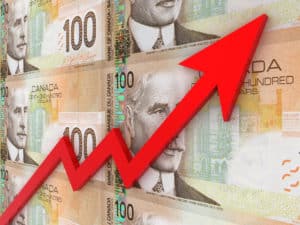BCE (TSX:ENB) and Enbridge (TSX:ENB) pay generous dividends and have long track records of giving shareholders annual increases. Investors who have some cash to put to work are wondering if BCE stock or Enbridge stock is undervalued right now and good to buy for a portfolio focused on passive income.
BCE
BCE currently offers a dividend yield of 8.75%. When yields get this high, there can be concern in the market that the distribution is at risk of being cut. BCE’s share price is down from $74 in the spring of 2022 to $45.50 at the time of writing. This isn’t far off the 2024 low of around $43, which took BCE to a level not seen in more than a decade.
Much of the pain over the past year is due to the jump in interest rates. The Bank of Canada raised rates aggressively to get inflation under control and back down to the 2% target. BCE uses debt to fund its growth initiatives, so the sharp rise in interest rates has had a negative impact on borrowing costs. As debt expenses surge, profits take a hit, and there is less cash available to reduce debt or pay dividends. BCE still raised the dividend in 2024, but the increase was close to 3% compared to the average annual hike of about 5% over the previous 15 years.
The Bank of Canada cut interest rates by 1.25% in recent months. This will help BCE heading into next year. At the same time, BCE has announced a deal to sell its stake in Maple Leaf Sports and Entertainment (MLSE) to Rogers for $4.7 billion. The deal is expected to close in 2025 and will give BCE a cash infusion to reduce its debt load.
Price wars in the mobile and internet sectors and revenue challenges in the media business also contributed to BCE’s decline in the past couple of years. These headwinds will likely persist in the near term, so investors shouldn’t anticipate a big bounce in the stock price.
That being said, management expects 2024 full-year revenue and adjusted earnings before interest, taxes, depreciation, and amortization (EBITDA) to be largely in line with 2023, so the extent of the pullback in the stock might be overdone. Falling interest rates, asset sales, and cuts to operating costs through staff reductions over the past year should shore up the balance sheet enough to enable BCE to maintain the dividend.
Enbridge
Enbridge is up about 30% in the past 12 months. The stock started to rebound from an extended slump around the time that market sentiment in Canada and the United States shifted from fears of more rate hikes to anticipation of rate cuts in the two countries in 2024. Now that both the Bank of Canada and the U.S. Federal Reserve have started to reduce interest rates, Enbridge could see additional support.
As with BCE, Enbridge uses debt to fund part of its growth program. Lower borrowing costs make it cheaper to fund energy infrastructure projects. Enbridge grows through a combination of acquisitions and organic developments. The company completed a US$14 billion acquisition of three natural gas utilities in 2024 and has a $24 billion capital program on the go to drive cash flow expansion over the coming years.
The stock is probably due for a pullback after the nice run, but investors who buy at the current level can get a solid 6.4% dividend yield.
Is one stock a buy?
BCE’s yield is enticing, and the stock is likely oversold right now as long as revenue and earnings remain stable. However, there might not be a dividend increase for 2025, given the headwinds in the sector.
Enbridge should be the safer pick today for a buy-and-hold strategy. The yield is still attractive, and any meaningful pullback should be an opportunity to add to the position.









